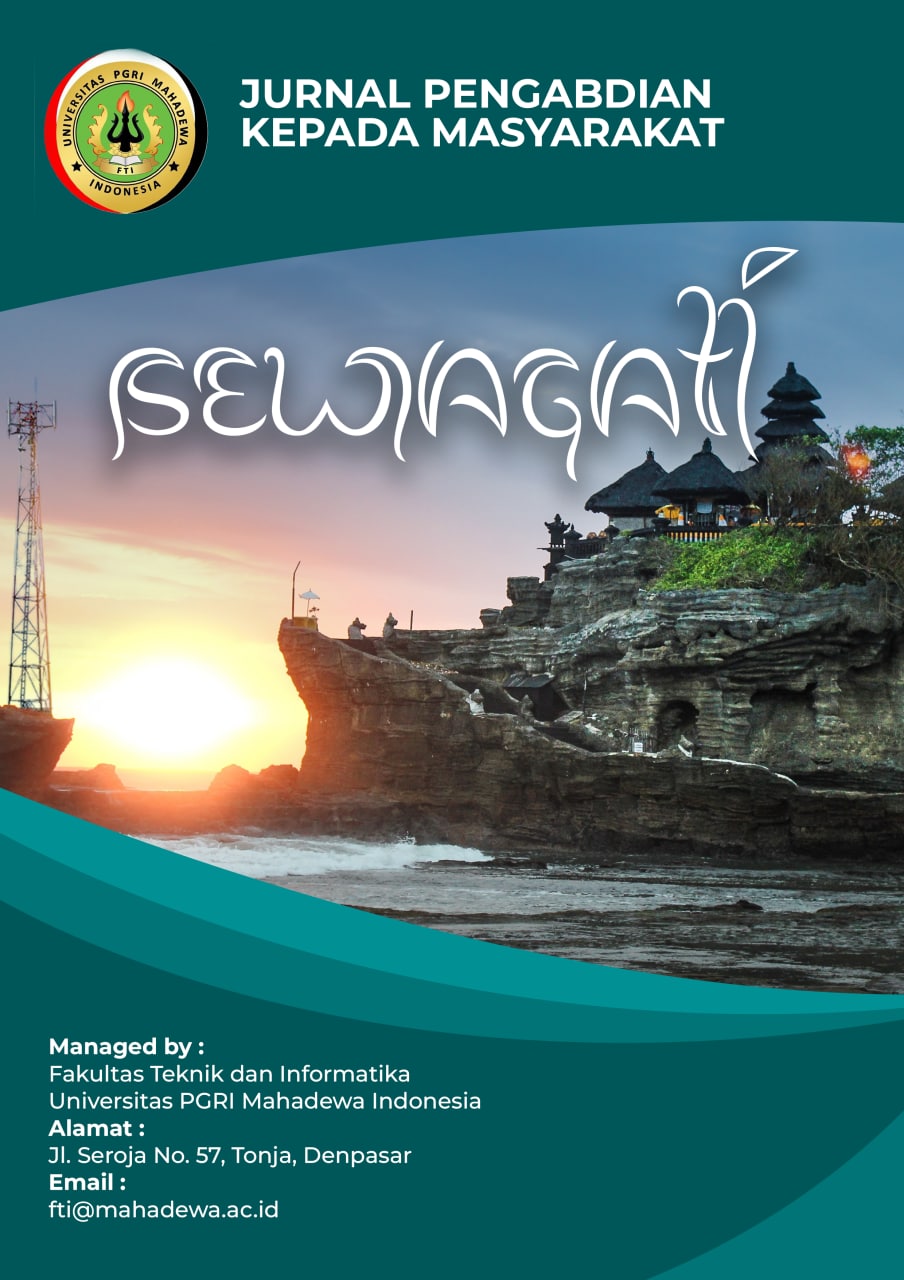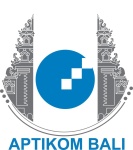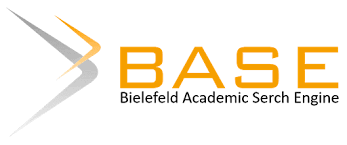PELATIHAN VIDEO PEMBELAJARAN BAGI INSTRUKTUR SEKOLAH PERHOTELAN BALI DAN GURU SMK DUTA BANGSA
DOI:
https://doi.org/10.59819/sewagati.v4i1.4823Abstract
This article presents the results of community service activities conducted by the authors' team due to the need for digital-based learning media to respond to the learning needs of Gen Z students. This activity aims to enhance the competencies of instructors and teacher in creating educational videos using the CapCut application. The activity was held at Bali Film School and attended by 15 participants from Bali Hospitality School and SMK Duta Bangsa. The workshop covered content planning, filming techniques, and video editing processes. Evaluations through questionnaires indicated that most participants were very knowledgeable or knowledgeable in using CapCut, although some specific features still required further explanation. The workshop results showed an improvement in participants' skills in utilizing digital technology for education. This activity is expected to support digital transformation in the education sector and improve teaching quality.
Downloads
References
Ambarita, J., Simanullang, M. P. K. P. S., & Adab, P. (2023). Implementasi pembelajaran berdiferensiasi. Penerbit Adab.
Ardiansyah, M. A. M., & Nugraha, M. L. (2022, January). Analisis Pemanfaatan Media Pembelajaran Youtube Dalam Meningkatkan Pemahaman Konsep Matematika Peserta Didik. In Semnas Ristek (Seminar Nasional Riset Dan Inovasi Teknologi) (Vol. 6, No. 1).
Biantoro, O. F. (2024). Efektifitas Media Video Dalam Pembelajaran Sejarah Kebudayaan Islam Di Madrasah Diniyah. Afeksi Jurnal Penelitian Dan Evaluasi Pendidikan, 5(2), 222-233.
Huraerah, A. J. A., Abdullah, A. W., & Rivai, A. (2024). Pengaruh teknologi informasi dan komunikasi terhadap pendidikan indonesia. Journal of Islamic Education Policy, 8(2).
Kemendikbud. 2016. Petunjuk Teknis Program Peningkatan Kompetensi Guru Pembelajar Moda Tatap Muka. Jakarta: Dirjen GTK.
Mendikbud. 2019. SE No.14 Tahun 2019 tentang penyederhanaan Rencana Pelaksanaan Pembelajaran (RPP). Jakarta, 10 Desember 2019.
Novela, D., Suriani, A., & Nisa, S. (2024). Implementasi pembelajaran inovatif melalui media digital di sekolah dasar. Journal of Practice Learning and Educational Development, 4(2), 100-105.
Ramadhan, R. S., Wirdani, R. R., Delpina, H., & Nelwati, S. (2025). Pendidikan Di Era Teknologi Informasi Dan Komuniksi. Jurnal Media Akademik (JMA), 3(1).
Saputro, A. H., Tawaqal, R. S., Recky, R., Siddiq, A. M., & Muttaqin, R. (2025). Pelatihan Penggunaan Aplikasi CapCut Versi Web Dalam Pembuatan Konten Marketing Bagi Para Pengrajin Sepatu Di Komunitas Sepatu Cibaduyut. Jurnal Abdi Insani, 12(4), 1559-1574.
Widiastari, N. G. A. P., & Puspita, R. D. (2024). Penggunaan Media Pembelajaran Digital Dalam Mengembangkan Motivasi Belajar Siswa Kelas IV SD Inpres 2 Nambaru. Elementary: Jurnal Inovasi Pendidikan Dasar, 4(4), 215-222.
Downloads
Published
Issue
Section
License
Copyright (c) 2025 Ni Made Dwi Wulan Setyawati, I Wayan Eka Sudarmawan, Made Arya Astina

This work is licensed under a Creative Commons Attribution-ShareAlike 4.0 International License.
Authors who publish with the Jurnal Sewagti agree to the following terms:
1. Authors retain copyright and grant the journal the right of first publication with the work simultaneously licensed under a Creative Commons Attribution License (CC BY-SA 4.0) that allows others to share the work with an acknowledgment of the work's authorship and initial publication in this journal.
2. Authors are able to enter into separate, additional contractual arrangements for the non-exclusive distribution of the journal's published version of the work (e.g., post it to an institutional repository or publish it in a book), with an acknowledgment of its initial publication in this journal.
3. Authors are permitted and encouraged to post their work online (e.g., in institutional repositories or on their website) prior to and during the submission process, as it can lead to productive exchanges, as well as earlier and greater citation of published work. (See The Effect of Open Access) .




















